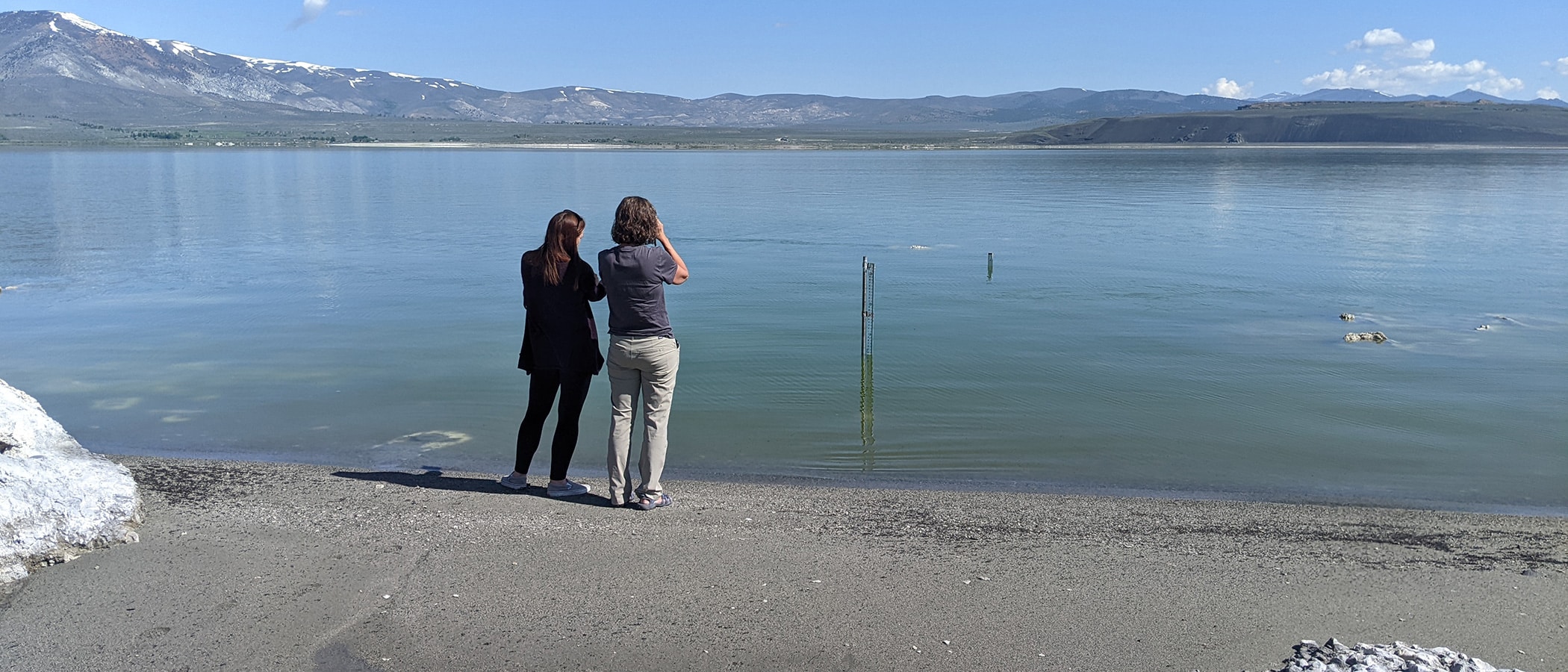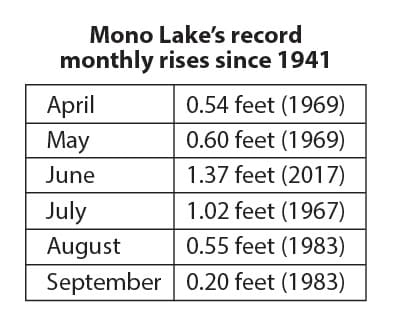
Lakewatch: Record rise for Mono Lake expected

A lot of snow was melting around Mono Lake in April, but Mono Lake rose less than a tenth of a foot that month, to 6380.07 feet above sea level on May 1. Why didn’t Mono Lake rise faster? April consistently has the least variation in Mono Lake levels of any month. If no big storms occur and streamflows are near historical averages, Mono Lake tends to rise a tiny bit, because inflow only slightly exceeds evaporation. May is also a low-variation month, and a rise exceeding 0.36 feet will set a new record (since 1989).
June through August, in an Extreme-wet year-type like this, is when most of the rise in Mono Lake will occur. In fact, if you add up the record monthly rises between April and September, a total rise of 4.3 feet is along the lines of what we will see this summer. This is about a foot higher than the 3.2-foot April–September rise in 2017, which beat the previous record 2.7-foot rise in 1983. Multiple monthly records could be broken this year, and with a strong El Niño likely to bring warmer winter temperatures, there is a good chance for the runoff year record rise of 3.56 feet set in 2017 to be broken next April 1.
In August Mono Lake will be the highest it has been in more than a decade and about a foot shy of the highest levels reached since the State Water Board’s 1994 decision to protect Mono Lake. It is urgent that stream diversions are paused as soon as possible in order to preserve these gains, allowing the lake to rise to the 6392-foot Public Trust lake level as quickly as possible.
Streamwatch: Epic runoff begins
The snowmelt runoff forecast is 226% of average for the 2023 runoff year (April 1, 2023–March 31, 2024), much higher than the previous record of 202% in 1983. That record was followed closely by 196% of average runoff in 2017.
This year, a heat wave at the end of April began melting the record snowpack rapidly and generated the first peak flows of the season. A warm-up in mid-May caused some road crossings to flood on smaller streams and started what will be a very long season of high flows in the larger Mono Basin streams.
During the high flow period in 2017 Southern California Edison (SCE) pumped water out of Agnew Reservoir in order to keep its Rush Creek reservoir storage below seismic safety limits. This is not necessary this year due to SCE’s expeditious infrastructure changes at all three reservoirs that increase their outflow capacity.
A project benefitting Rush Creek that the Los Angeles Department of Water & Power (DWP) agreed to a decade ago is the construction of a new high-flow outlet in the Grant Lake Reservoir spillway. Construction is scheduled to begin in April 2024. The outlet will allow reliable delivery of high restoration flows to Rush Creek every year.
This year, without the outlet, there is a chance that the minimum required peak flow of 750 cubic feet per second could be reached, however, an early peak could be captured by the reservoir and a cool summer could result in a lower peak but extend high flows well into August. High August flows, if combined with a wet 2024 winter, could make it challenging to lower Grant enough for construction before October 1 to maintain low fall and winter flows that benefit Rush Creek fish. In anticipation of these possible wet-year challenges, DWP has requested from the State Water Board a one-year delay in construction.
This post was also published as an article in the Summer 2023 Mono Lake Newsletter. Top photo by Robbie Di Paolo.
